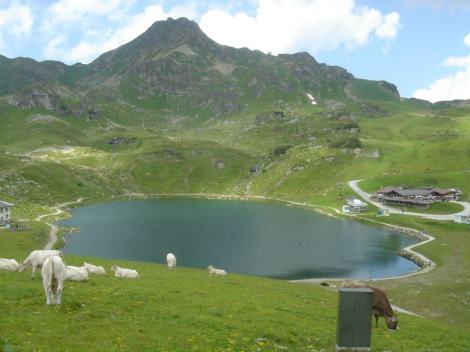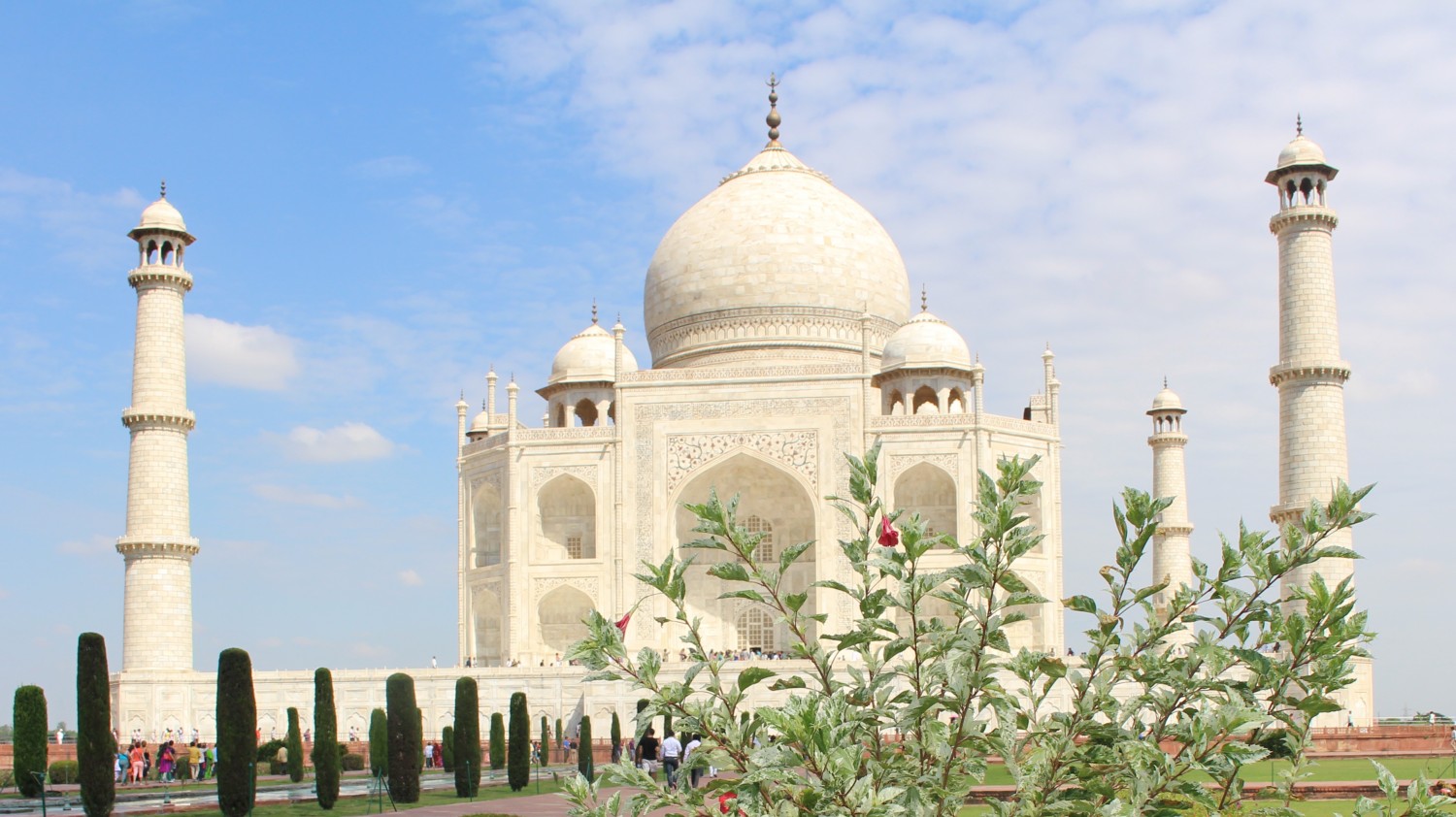July 27 – August 3: Austria
The first stop in in Austria was the little village of Sirnitz which was more like a summer camp. The hosts gave us a formal welcome where we got to try fresh spring water from the mountains as we toured an old church that had actual skeletons hanging up. The tour continued to a mill and farm where we were given the challenge of scavenger hunt to find flour, eggs, water, and cheese. Later a pool party and barbecue was arranged for us where we were fed a meal that was prepared using the ingredients from the scavenger hunt. Some took part in their version of karaoke where we sang along to Red Hot Chili Peppers, Oasis, Van Morrison, and even the Rembrants (Friends!). We were then taught two traditional dances. The first dance had five different parts that involved a lot of spinning. The second, only had two parts and included slapping your legs and feet (like Cotton-eyed Joe) before kicking the butt of the person in front of you.
Riddle: A man who makes it doesn’t want it. A man who wants it doesn’t need it. A man who needs it doesn’t know it. What is it?
Answer: A coffin.
If you’re in Vienna, opt for the bike tour! I wish I did this in more cities. It’s a fun and different way to see a city. Our tour was about six miles and two hours in length which isn’t too bad with the site seeing that was involved. Our guide set up a lecture for us from a concentration camp survivor – wow! I’m fascinated by World War II history and the struggle that any non-Aryan person faced. It breaks my heart. The lecture was too short, I would’ve loved to hear more but we needed to get to the classical concert. The concert featured pieces by Johann Strauss. Unfortunately, I only recognized one of them, the Blue Danube.
I’m glad that I got to meet with the survivor before visiting the Mauthausen-Gusen concentration camp. Although, hearing about a place as heinous as this and seeing it firsthand is completely different. You may think you know but you really have no idea. It was an eye-opener. Mauthausen became one of the largest slave labor camps in Europe containing approximately 85,000 inmates as of early 1945. The camp was labelled as Grade III (and never lost this title), which meant that it was made to be one of the toughest camps. It was mostly used for extermination through labor of those who were educated members of the higher social classes in countries under Nazi rule during WWII. Mauthausen was often referred as Knochenmuhle or the bone-grinder, which should give you a better understanding as to why it was labelled Grade III. Like other concentration camps, the death toll is uncertain but some say it is between 122,766 and 320,000 for the entire camp.
“I Conquered the Alps!” – that’s what my shirt says anyway. In reality the Alps may have conquered me. I was able to make it to the top with the assistance of a ski lift but coming down was a different story. We had to walk back down on slippery gravel which of course caused not only myself but a few others to slip and fall along the way. Aside from the multiple falls, the view from the top of the mountain was unlike anything I have ever seen. I’ve been to the top of mountains before, specifically the Rockies, but this view was different. Sunk into the top of the mountain was a lake (surrounded by livestock) with a cafe off to the side. I wish I could remember the name of the cafe because I had one of my favorite meals there: Kaiserschmarrn, a shredded, fluffy pancake covered in powdered sugar and fruit. You can have it for breakfast or dessert. So good. Seriously, look up the recipe now and go make it!
 In Hallein, I got to visit the salt mines that have been in use for over 7,000 years. To enter the salt mines we were given white jump-suits for protection and then we were loaded onto a miniature train which was more like a bench that we had to straddle.The train took us down through cold (10 degrees celsius), claustrophobic tunnels where we disembarked in a cave to watch a short movie about the history of the Hallein Salt Mines. After the clip, we slid down wooden planks to get to the next level which put us 1km inside the mine and 240 meter below the surface. Once we reached that level we were informed that we crossed the Austrian border into Germany – cool! Getting out of the mines wasn’t as fun, we had to climb almost 300 steps to see the sun again. Sitting on top of the mines was a bobsled park. Now before you get excited, it is not like bobsledding in Cool Runnings. The bobsled sat on a metal track that took you down that mountain, at your own speed.
In Hallein, I got to visit the salt mines that have been in use for over 7,000 years. To enter the salt mines we were given white jump-suits for protection and then we were loaded onto a miniature train which was more like a bench that we had to straddle.The train took us down through cold (10 degrees celsius), claustrophobic tunnels where we disembarked in a cave to watch a short movie about the history of the Hallein Salt Mines. After the clip, we slid down wooden planks to get to the next level which put us 1km inside the mine and 240 meter below the surface. Once we reached that level we were informed that we crossed the Austrian border into Germany – cool! Getting out of the mines wasn’t as fun, we had to climb almost 300 steps to see the sun again. Sitting on top of the mines was a bobsled park. Now before you get excited, it is not like bobsledding in Cool Runnings. The bobsled sat on a metal track that took you down that mountain, at your own speed.
We were given a tour of Salzburg, which was the setting for parts of The Sound of Music. During our tour we were actually shown where the movie was filmed. For example, I got to walk through the cemetery where the Von Trapp family hides from the Reich after their performance at the competition. I also learned that Salzburg was the birthplace of Wolfgang Amadeus Mozart and we were shown his childhood home. Hellbrunn Palace was built by the Prince-Archbishop of Salzburg and was only meant for use during summer days, therefore there are no bedrooms in the palace. We were given a tour of the palace and then shown to the largest tourist attraction of the site…the trick fountains. Some are spread out sporadically while another trick occurs around a large stone table – the surprise is in the seats!
In Innsbruck, I learned how to make Apfelstrudel, or Apple Strudel as you may know it as. It’s fairly easy, once you learn the basics…and that’s saying a lot. I am not a baker.
Bruises and delicious food made for great memories – thanks Austria!
August 4: Zurich & Lucerne, Switzerland
Although our time in Switzerland was short, we got an informative tour of Lucerne. It is the most populous city in central Switzerland, which is probably due to it’s location on Lake Lucerne with views of the Swiss Alps. The most popular site within Lucerne is Kapellbrucke, or the Chapel Bridge. It is a covered wooden footbridge, built in the 14th century, that spans diagonally across the Reuss River. In a small park, there is the famous carving of a dying lion which was made to commemorate the hundreds of Swiss Guards who were massacred in 1792 during the French Revolution, when an armed mob stormed the Tuileries Palace in Paris. You will be able to see the Swiss Guards while out and about in Switzerland – make sure you take a photo!
I really wish we were given more time in Switzerland but this just means that I’ll have to go back. It is a beautiful country.
